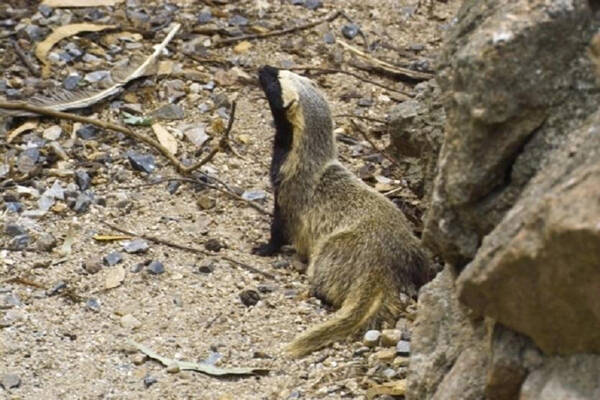Galictis cuja
IUCN
LCBasic Information
Scientific classification
- name:Galictis cuja
- Scientific Name:Galictis cuja
- Outline:Carnivora
- Family:mustelidae mustelinae genus
Vital signs
- length:40-69cm
- Weight:1-2.5kg
- lifetime:About 10 years
Feature
Very lazy, rarely builds its own nest
Distribution and Habitat
Distribution: From Central America to South America. From southern Mexico to Brazil and Bolivia. Lives below 1500 meters above sea level. Often found in rain forests near water sources. Lives under tree roots and in burrows.
Appearance
The weasel is an animal between the skunk and other weasels. It looks a bit like a honey badger. The difference is that it does not have the white fur on the upper body like the honey badger. Most weasels are slender and agile, only the badgers and the wolverines are bulky. Their fur is generally brown or black, and some have spots and stripes. The tail and limbs are relatively short. There are five curved, non-retractable claws on the feet. The mouth is relatively short and the ears are small. The number of teeth varies from 28 to 38, and a common feature is the lack of a second molar on the upper jaw. Like the weasel, all weasels have well-developed anal glands, which they use to mark their territory. Some species (such as the honey badger) also use their anal glands for self-defense. Most weasels are relatively small compared to other carnivores, but their sizes vary greatly. The weasel is the smallest carnivore in the world, weighing only 250 grams at most, while sea otters, giant
Details
Galictis cuja, like most species, is active at night or at dusk, though some also forage during the day. Many species use burrows dug by themselves or by other animals as their nests. Many are primarily terrestrial, and their slender bodies allow them to burrow into burrows to hunt, while some species often live in trees. Many species of ferrets are excellent swimmers, especially those of the Luna subfamily and mustelids. They generally prefer to live alone, and use secretions from their anal glands, urine, and feces to mark their territory. They have a particularly developed sense of smell, which they use to hunt and communicate with other species. They also have good vision and hearing. Many mustelids use the foul-smelling secretions from their anal glands as a defensive weapon.

The diet of the small nest weasel is not much different from that of the large nest weasel. Both are hunters who will not refuse anything. They will dig holes to prey on small animals. In some parts of America, the small nest weasel is kept as a pet.
The small nest weasel is mainly carnivorous. They also eat more or less plants, depending on the species and in different seasons. The diets of different species within the family vary greatly. Many weasels prey on rodents that are larger than they are. For example, martens prey on hares that are much heavier than they are, and martens even attack reindeer. The main sources of meat in weasels are various vertebrates, including small mammals, birds and their eggs, reptiles, amphibians and fish, as well as insects, crustaceans, worms, etc. Plant foods include fruits, walnuts, tubers, etc.
Protect wild animals and eliminate game.
Maintaining ecological balance is everyone's responsibility!








